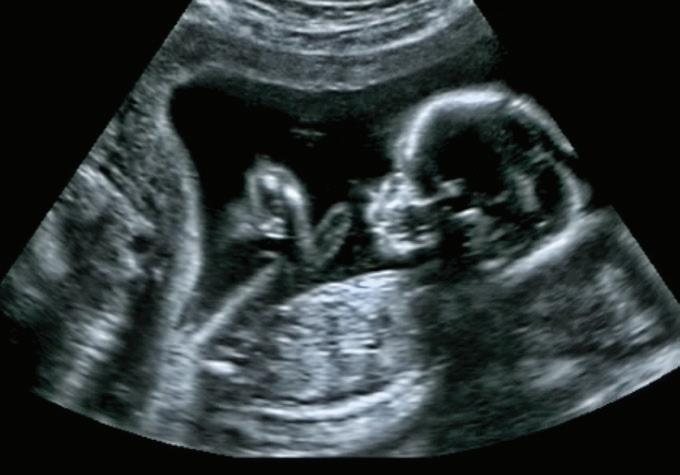THE PEDIATRIC HEALTH
 AUTHORS : Valerie Borum Smith, MD, MPH, FAAP / Amanda K. Midgett, BBA
AUTHORS : Valerie Borum Smith, MD, MPH, FAAP / Amanda K. Midgett, BBA

 AUTHORS : Valerie Borum Smith, MD, MPH, FAAP / Amanda K. Midgett, BBA
AUTHORS : Valerie Borum Smith, MD, MPH, FAAP / Amanda K. Midgett, BBA
In 2021, The University of Texas at Tyler and The University of Texas System Department of Population Health released The Health Status of Northeast Texas, which provided an overview of the health challenges and outcomes for the East Texas region.1 This report created a compelling case for the need to invest in the health of Northeast Texans, but it included little information on pediatric health concerns. This report aims to describe the pediatric population, health outcomes and pediatric health care infrastructure for the region.
Northeast Texas is a diverse area that is home to more than 1.9 million individuals. 2 About 7.5% of Texans live in the region. Twenty-six counties in the area are rural, with populations of less than 50,000 people. There is no defined boundary for Northeast Texas. For this report, we have identified Northeast Texas as a 42-county region that encompasses the Texas Department of State Health Services Region 4/5 North and seven additional counties: Freestone, Hardin, Kaufman, Limestone, Leon and Madison. This area is used by The University of Texas at Tyler School of Medicine for recruitment and clinical placements with the goal of reducing health disparities and improving quality of life throughout the region.
 Lamar Red River
Rockwall
Bowie Delta Hopkins Titus Camp Cass
Marion Harrison Panola
Gregg
Upshur Wood
Van Zandt Kaufman
San Jacinto
Polk
Trinity
Houston Leon
Freestone
Henderson Anderson Cherokee
Rusk Angelina
Limestone Tyler Hardin
Madison
Smith
Rains
Shelby
Nacogdoches
Sabine San Augustine Newton Jasper
Franklin Morris
Lamar Red River
Rockwall
Bowie Delta Hopkins Titus Camp Cass
Marion Harrison Panola
Gregg
Upshur Wood
Van Zandt Kaufman
San Jacinto
Polk
Trinity
Houston Leon
Freestone
Henderson Anderson Cherokee
Rusk Angelina
Limestone Tyler Hardin
Madison
Smith
Rains
Shelby
Nacogdoches
Sabine San Augustine Newton Jasper
Franklin Morris
There are approximately 450,000 children in Northeast Texas, comprising 30% of its total population. 3 An estimated 6.1% of Texas children live in Northeast Texas.
Children growing up in Northeast Texas are more likely to live in poverty than their peers across Texas and the United States. The average child poverty rate for Northeast Texas counties is 22.4% compared to the state average of 18.8% and national average of 17%. Only three counties in Northeast Texas (Hardin, Kaufman and Rockwall) have child poverty rates below the national average. The highest rates of childhood poverty are seen in Marion and San Augustine counties, where nearly one-third of children live in poverty. 4
Childhood Poverty is associated with multiple poor health outcomes, including chronic illnesses, nutritional deficiencies and developmental delays. 5 With higher rates of poverty in Northeast Texas, children living there are at greater risk for these health problems than their counterparts. Food insecurity is another crucial social driver associated with health challenges, including poor overall health, mental health problems, obesity, increased emergency department visits and hospitalizations, and increased health care expenditures. 6 Rates of childhood food insecurity are high in Northeast Texas. Only one county in the region (Rockwall) has childhood food insecurity rates below the national average of 15%, and only six counties are below the Texas average of 18.9%.7

Children growing up in Northeast Texas are more likely to live in poverty than their peers across Texas and the United States.
Health insurance coverage is an important factor in the ability of a child to access preventive and acute health care. Children with coverage receive care earlier when problems arise, and they are less likely to require hospitalization. 8
Unfortunately, children in Northeast Texas are more likely to be uninsured than children across Texas and more than twice as likely to be uninsured as their national counterparts. If Northeast Texas were its own state, it would rank 51st in the percentage of children who do not have any health insurance access. 9 A significantly higher percentage of Northeast Texas children are also insured through publicly funded health insurance, such as Medicaid and Children’s Health Insurance Program (CHIP). Children insured by Medicaid and CHIP have better access to care and better health outcomes than their uninsured peers. There are also often barriers to care for these children, including narrow provider networks, distance to providers accepting their insurance and limitations on some services.10
Sources: Center for Children and Families of Georgetown University Health Policy Institute, Children’s Health Care Report Card, Children’s Health Coverage in Texas; Kids Count Data Center, Annie E. Casey Foundation. Uninsured children (birth to 18) in Texas, 2020.
Sources: Center for Children and Families of Georgetown University Health Policy Institute. Children’s Health Care Report Card, Children’s Health Coverage in Texas; Kids Count Data Center, Annie E. Casey Foundation. Medicaid and CHIP enrollment (birth to 18) in Texas, 2020.
One of the reasons that the previous report did not include significant information regarding child health outcomes is that many child health indicators are reported at the state level, but not the county level. While the data is limited, there is information available at the county level for some important health indicators. It reveals important health disparities for children in Northeast Texas.
Premature births (less than 37 weeks gestational age) result in increased health challenges that can persist throughout childhood and into adulthood. Children who were born preterm are more likely to struggle with asthma, pulmonary disease and neurologic problems (such as developmental delay and cerebral palsy). Preterm birth is also associated with increased incidence of high blood pressure, heart disease, asthma, Type 2 diabetes and increased mental health problems as adults.11
Approximately 10.1% of children in the United States and 10.8% of children in Texas are born prematurely. In Northeast Texas, 11.0% of children are born early. While this average is not strikingly higher than state averages, 22 of the 42 counties within the region have rates above the state average. Eleven counties have premature birth rates higher than 12%. In Bowie County, 13.5% of children are born prematurely. These elevated rates of prematurity increase the need for pediatric health resources in these areas.12

Teen births are an important health indicator for the pediatric population because they are associated with poor health outcomes for both the mother and the child.13 The teen birth rate (the number of births per 1,000 females aged 15 to 19 in a community) is startling in Northeast Texas. The regional average is 20% higher than the state average and 170% higher than the national average.14,15 Teen birth rates may be particularly high due to challenges accessing routine preventive care and contraception. The resulting high number of births increases demand on the health care system as teen mothers and their children have increased health problems.

Per 1,000 Females Aged 15-19
The regional average of teen birth rates
20% higher than the state average and 170% higher than the national average.
Child mortality rates are the deaths of residents below the age of 18 per 100,000 residents from any cause. Children in Northeast Texas are significantly more likely to die than their counterparts across the state and country. It is important to note that no data is available for 14 of the 42 counties in our Northeast Texas region. Of those counties reporting data, the child mortality rate is 63.6 per 100,000. The Texas rate is 50 per 100,000, and the United States rate is 25.9 per 100,000.16,17 Red River County has the highest child mortality rate in the state. When factored for the regional population, this means that 61 more children die in Northeast Texas each year than in a population the same size taken from across the state. That number jumps to 169 when compared to children across the United States.

Access to pediatric care is vital for the well-being and health of children. Pediatricians provide preventive care and anticipatory guidance to reduce pediatric illness and injury, in addition to providing acute care for illnesses and management of chronic diseases found in the pediatric population. The American Academy of Pediatrics 2013 Pediatrician Workforce Policy Statement notes the need for increased numbers of both general pediatricians and pediatric subspecialists due to multiple factors, including the increased incidence of chronic health conditions among pediatric patients.18 Unfortunately, Northeast Texas lags significantly behind national and state standards for general and subspecialty pediatric care.

According to the American Board of Pediatrics (the certifying organization for pediatricians), there is one general pediatrician for every 1,304 children in the United States. In Texas, those numbers are one pediatrician for every 3,179 children.19 In the Northeast Texas region, 24 counties do not have a board-certified pediatrician. This means that more than 105,000 Northeast Texas children do not have access to a pediatrician in their county. Of the counties that do have general pediatricians, none are above the national average, and only six are above the state average for general pediatric coverage.
While the lack of general pediatricians is striking, the scarcity of pediatric subspecialists is even more concerning. Lack of access to pediatric subspecialty care is a common reason for transferring children to hospitals outside of the region. Families must also travel significant distances for outpatient visits and follow-up appointments with subspecialists. For example: A child in Trinity County must travel over 100 miles to reach the nearest pediatric hematologist-oncologist. The time and expense for families in Northeast Texas to care for their children due to lack of pediatric subspecialty care near home creates significant barriers to care.
The American Board of Pediatrics creates driving distance estimates for a variety of pediatric subspecialties. The following is an example of the distances typically traveled to access subspecialty care for adolescent medicine in Northeast Texas:
58.42% of Northeast Texas pediatric patients drive over 80 miles to receive care.
32.01% drive between 40-80 miles to receive care.
9.58% drive between 20-40 miles to receive care.
American Board of Pediatrics.
Based on data from the Texas Medical Board and the American Board of Pediatrics, Northeast Texas has no pediatric hematology-oncology, developmental-behavioral, emergency medicine, nephrology, rheumatology, child abuse or adolescent medicine subspecialists. 20,21 Those subspecialties that are available are concentrated in just a few Northeast Texas counties.
The current pediatric workforce is inadequate for the child population of Northeast Texas. Without intentional intervention, this gap will increase significantly in the next 20 years. According to a report in the Annals of Family Medicine, the median age of retirement for pediatricians from clinical practice is 66 years of age. 23 Based on the ages of current pediatricians in Northeast Texas, 40% of the current workforce is likely to retire in the next decade. 21

2023: 167
2033: 99
2043: 56
SUBSPECIALISTS
2023: 27
2033: 16
2043: 8
Each year, more than 500,000 children in Texas need medical care that requires hospitalization. 24 For families in Northeast Texas, this often means seeking care far from home and being displaced from their support systems due to lack of pediatric hospital infrastructure in their communities. According to the 2020 DSHS-AHATHA Annual Survey of Hospitals, only 10 counties in the 42-county region of Northeast Texas have pediatric inpatient hospital bed capacity. Throughout the region, there are a total of 109 pediatric inpatient beds. This constitutes 3.4% of the state’s pediatric bed capacity for the 6.1% of Texas children living in the area. 25
Texas
Source: Texas Department of State Health Services, Texas Hospital Association Annual Survey of Hospitals, 2020.
Within the 42-county region, there are no pediatric intensive care beds. 25 Any child in Northeast Texas needing intensive care services must be transferred out of the region to receive care. A 2021 analysis published in Pediatrics concludes that trends in closing rural hospital pediatric units and consolidating pediatric intensive care services to large children’s hospitals has reduced access to care for children in rural areas disproportionately. 26
4 19
109 2,524 0 612 14 27 4 27 12 2
Because of a lack of inpatient, critical care and subspecialists available in the Northeast Texas area, ill children often require emergent transfer to tertiary care centers more than 100 miles away. When transfers are needed, they often take six to eight hours to complete based on bed availability at accepting hospitals and transport team availability. These delays in care can be devastating for Northeast Texas children.
15
While transfer data is not available for the entire region, information from CHRISTUS Trinity Mother Frances Hospital in Tyler and UT Health East Texas provide a picture of the impact of a lack of pediatric hospital and subspecialty care in the largest city in the region. In 2022, these hospitals transferred 938 children to hospitals outside of the region because they did not have the necessary subspecialist, intensive care or monitoring capabilities that the children needed. 27,28 Given that these numbers do not include many hospitals in the region (many of which have no or limited pediatric bed availability), the actual number of families affected by medical transfers is likely much higher. Not only do transfer delays impact children’s health, but these families also experience significant financial hardship and stress. They are often separated from their family and support systems in order to access needed care for one of their children.

Reviewing available data regarding children and pediatric health care paints a concerning picture of the health and well-being of children and adolescents in Northeast Texas.
• Northeast Texas children are more likely to be living in poverty and to be food insecure than their counterparts across Texas and the United States.
• If Northeast Texas were its own state, it would rank 51st in the percentage of children who do not have any health insurance access.
• Northeast Texas has higher rates of preterm births and teen births than state and national averages.
• Northeast Texas children have higher rates of child mortality: 61 more children die in Northeast Texas each year than in a population the same size taken from across the state.
• More than 105,000 Northeast Texas children do not have access to a pediatrician in their county.
• Northeast Texas families routinely drive more than 80 miles to access pediatric subspecialty care.
• The entire 42-county area of Northeast Texas has no pediatric intensive care beds.
INVESTING IN CHILDREN’S HEALTH CARE
For Northeast Texas to thrive, it must support its children. now is an investment in the future of Northeast Texas.
1 Nehme E, Schuessler K, Alvarado C, Elerian N, Miyakado H, Mandell D, Lakey D. (2021). The Health Status of Northeast Texas, 2021. Tyler, TX: The University of Texas at Tyler/ University of Texas System Population Health.
2 Texas Association of Counties, County Information Program. Population of Texas Cities and Counties. Retrieved from https://txcip.org/tac/census/towns.html
3 Kids Count Data Center, Annie E. Casey Foundation. Total Child Population in Texas. Retrieved from https://datacenter.kidscount.org/data/tables/3050-total-child-populatio n?loc=45&loct=2#detailed/5/6515-6768/false/574,1729,37,871,870,573,869,36,868,867/ any/6304
4 Kids Count Data Center, Annie E. Casey Foundation. Poverty (birth to 17) in Texas. Retrieved from https://datacenter.kidscount.org/data/tables/3065-poverty-birth-to-age17?loc=45&loct=5#detailed/5/6515-6768/false/574/any/8190,8191
5 U.S. Department of Health and Human Services, Office of Disease Prevention and Health Promotion. Health People 2030, Poverty. Retrieved from https://health.gov/ healthypeople/priority-areas/social-determinants-health/literature-summaries/poverty
6 Thomas M, Miller D, Morrissey T. (2019) Food Insecurity and Child Health. Pediatrics 144(4): e20190397.
7 Kids Count Data Center, Annie E. Casey Foundation. Child food insecurity in Texas. Retrieved from https://datacenter.kidscount.org/data/tables/7889-child-food-insecurity?l oc=45&loct=5#detailed/5/6515-6768/false/574/any/15218,15219
8 Murphy, D. (2017) Health insurance coverage improves child well-being. Child Trends. Retrieved from https://www.childtrends.org/publications/health-insurance-coverageimproves-child-well
9 Center for Children and Families of Georgetown University Health Policy Institute. Children’s Health Care Report Card, Children’s Health Coverage in Texas. Retrieved from https://kidshealthcarereport.ccf.georgetown.edu/states/texas/
10 Medicaid and CHIP Payment and Access Commission. (2021). Access in brief: Children’s experiences in accessing medical care. Retrieved from https://www.macpac.gov/wpcontent/uploads/2016/06/Access-in-Brief-Childrens-Experiences-in-Accessing-MedicalCare.pdf
11 Raju T, Pemberton V, Saigal S, Blaisdell C, Moxey-Mimas M, Buist S. (2016). Long-term healthcare outcomes of preterm birth: An executive summary of a conference sponsored by the National Institutes of Health. Journal of Pediatrics. DOI: https://www.sciencedirect. com/science/article/pii/S0022347616310836?via%3Dihub
12 March of Dimes, PeriStats. Preterm births. Retrieved from https://www.marchofdimes. org/peristats/data?reg=99&top=3&stop=60&lev=1&slev=4&obj=18&cmp=99&sreg=48
13 Leftwich H, Ortega Alves M. (2017). Adolescent pregnancy. Pediatric Clinics of North America 64(2):381-388. DOI: 10.1016/j.pcl.2016.11.007.
14 University of Wisconsin Population Health Institute. County Health Rankings Model, Teen Births. Retrieved from https://www.countyhealthrankings.org/explore-healthrankings/county-health-rankings-model/health-factors/health-behaviors/sexual-activity/ teen-births?year=2020&state=48&tab=1
15 U.S. Department of Health and Human Services, Office of Population Affairs. Trends in teen pregnancy and childbearing. Retrieved from https://opa.hhs.gov/adolescent-health/ reproductive-health-and-teen-pregnancy/trends-teen-pregnancy-and-childbearing
16 University of Wisconsin Population Health Institute. County Health Rankings Model, Child Mortality. Retrieved from https://www.countyhealthrankings.org/explore-healthrankings/county-health-rankings-model/health-outcomes/length-of-life/child-mortalit y?keywords=&f%5B0%5D=type%3Astates&f%5B1%5D=type%3Acounties&year=2022& state=48&tab=1 17 United Health Foundation. America’s Health Rankings, Child Mortality.
Retrieved from https://www.americashealthrankings.org/explore/health-of-women-andchildren/measure/child_mortality_a/state/ALL
18 Basco W, Rimsza M, Hotaling A, Sigrest T, Simon F. (2013). Pediatrician workforce policy statement. Pediatrics 132(2)390-397. DOI: https://doi.org/10.1542/peds.2013-1517
19 American Board of Pediatrics. General Pediatricians U.S. State and County Maps. Retrieved from https://www.abp.org/dashboards/general-pediatricians-us-state-andcounty-maps

20 American Board of Pediatrics. Pediatric Subspecialty U.S. State and County Maps. Retrieved from https://www.abp.org/dashboards/pediatric-subspecialty-us-state-andcounty-maps
21 Texas Medical Board courtesy of Texas Pediatric Society. Personal communication, May 2022.
22 Texas Department of State Health Services. (2018). Texas Projections of Supply and Demand for Primary Care Physicians and Psychiatrists, 2017-2030. Retrieved from https:// www.dshs.texas.gov/sites/default/files/legislative/2018-Reports/SB-18-PhysiciansWorkforce-Report-Final.pdf
23 Petterson S, Rayburn W, Liaw W. (2016). When do primary care physicians retire? Implications for workforce projections. Annals of Family Medicine 14(4)344-349. DOI: https://doi.org/10.1370/afm.1936
24 Weiss A, Liang L, Martin, K. (2022) Overview of hospitalization stays among children and adolescents, 2019. Agency for Healthcare Research and Quality, Healthcare Cost and Utilization Project. Retrieved from https://hcup-us.ahrq.gov/reports/statbriefs/sb299Hospital-Stays-Children-2019.jsp
25 Texas Department of State Health Services, Texas Hospital Association Annual Survey of Hospitals. (2020).
26 Cushing A, Bucholz E, Chien A, Rauch D, Michelson K. (2021). Availability of pediatric inpatient services in the United States. Pediatrics 148(1):e2929941723. DOI: 10.1542/ peds.2020-041723
27 CHRISTUS Trinity Mother Frances Pediatric Transfer Data. (2022). Personal communication.
28 UT Health East Texas Pediatric Transfer Data. (2022). Personal communication.
Many thanks go to Christian Alvarado, PhD; Tiffany Hill, MD; Paul McGaha, DO, MPH; and Peter Pendergrass, MD, for their contributions to this report.

Special thanks go to Brittney Nichols, MBA, LPC-S, of The University of Texas at Tyler; Ana Stelter of the Texas Hospital Association; Stacey Mather of the Texas Pediatric Society; Mark Barrett, MD, of CHRISTUS Trinity Mother Frances in Tyler; and Robin Davis of UT Health East Texas for providing information utilized in this report.
Thank you to Dr. David Lakey and Nagla Elerian for their guidance and support in creating this report.